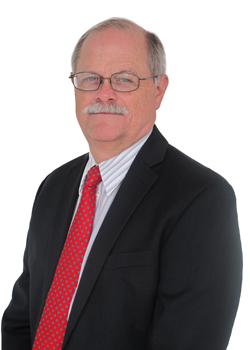|
In this issue, we introduce one of our newly elected members
of the VTS Board of Governors, David Thurston. David has been involved in
systems engineering, emphasizing design, construction and operations of
railroad and transit systems for over 37 years.
He received a BS in Electrical and Computer Engineering from Clemson
University in 1977, a MS in Electrical and Computer Engineering, George Mason
University in 1989, and a Ph.D. in Engineering at Temple University in 2012.
This is his self-introduction to our members:
 I am a Registered Professional Engineer in eight states, a
Fellow and Chairman of the North American Section in the Institution of Railway
Signal Engineers (IRSE). I am an active member of the American Railway Engineering
and Maintenance of Way Association (AREMA), where I serve on three standards
committees, and I act as sub-committee chair for Positive Train Control
Maintenance and Testing. I am a named
member of a National Transportation Research Board that conducts research on
the railway workforce, and the IDEA program for new and novel research
activities. I am also a member of the
American Society for Quality, and the National Fire Prevention Association. I am a Registered Professional Engineer in eight states, a
Fellow and Chairman of the North American Section in the Institution of Railway
Signal Engineers (IRSE). I am an active member of the American Railway Engineering
and Maintenance of Way Association (AREMA), where I serve on three standards
committees, and I act as sub-committee chair for Positive Train Control
Maintenance and Testing. I am a named
member of a National Transportation Research Board that conducts research on
the railway workforce, and the IDEA program for new and novel research
activities. I am also a member of the
American Society for Quality, and the National Fire Prevention Association.
Professionally, I have led several multi-million dollar
design and design/build projects, being fully responsible for financial and
technical progress. For the last 25
years, I have been the Chief Engineer for Systems at three major consulting
firms, doing work for clients such as Amtrak, NJ Transit, Houston Metro,
Washington Area Metropolitan Transportation Authority, The Long Island
Railroad, and many more. I have also
worked on projects in Canada, China, Venezuela, Chile, Egypt, and Mexico, among
others. In addition, I have published or presented over 30 papers on rail and
transit research.
I have been an active volunteer for several organizations
over the last 25 years, and have been in a position of responsibility leading
these organizations for much of that time. As such, I have used my strengths in
organizational skills and program management experience within these
organizations to improve the quality of services offered to the members, and
increase membership.
As an engineering consultant with close ties to academia, I
have contributed to graduate level courses in the rail and transit field to
promote the profession to young students and graduates in engineering. My field (as with several other engineering
disciplines) suffers from a lack of new talent to carry on both the
institutional knowledge and interest in advancing technology. Through the IEEE, the IRSE, and AREMA, I have
taken on initiatives to further promote the profession with course material,
speaking engagements and edited an introductory book on railway train control.
Over the last few years I have been deeply involved with the
Joint Rail Conference. As an author, track chair, session moderator, co-Chair
and Chair; I have a vested interest in seeing the JRC maintained as the leading
academic conference in North America devote solely to rail transportation.
For the Institution of Railway Signal Engineers, I have
organized several mini-conferences in conjunction with other rail events to
enhance the experience of the Engineering community attending these
functions. Under the auspices of the
IRSE, I co-wrote a book on Railway Signaling that is in wide use throughout the
industry and is used in graduate level courses at the University of Illinois
Rail program.
I am involved in the IEEE Standards Association and a member
of two Rail Transit Vehicle Interface working groups. As Chair of Working Group 25, I was
responsible and largely wrote the entire IEEE-1698 Guideline for Safe Braking
Distance Calculation. This guideline is
used throughout the industry for train control design and safety
assessments. I continue to support the
other Working Groups that meet industry and academic needs.
|